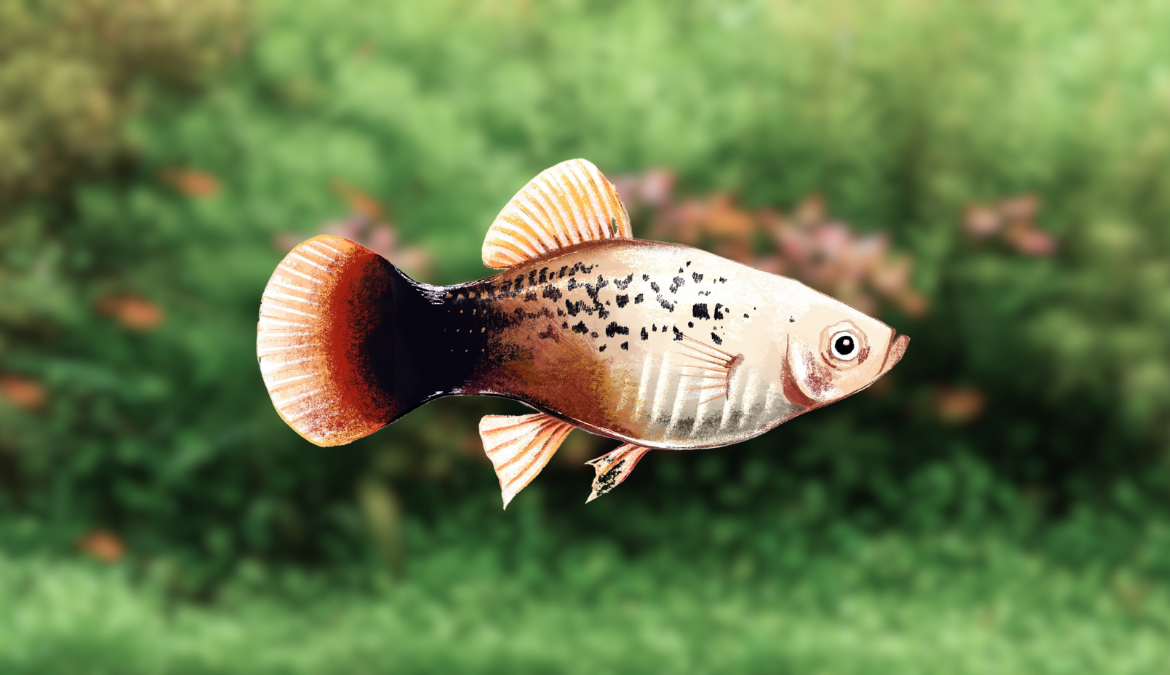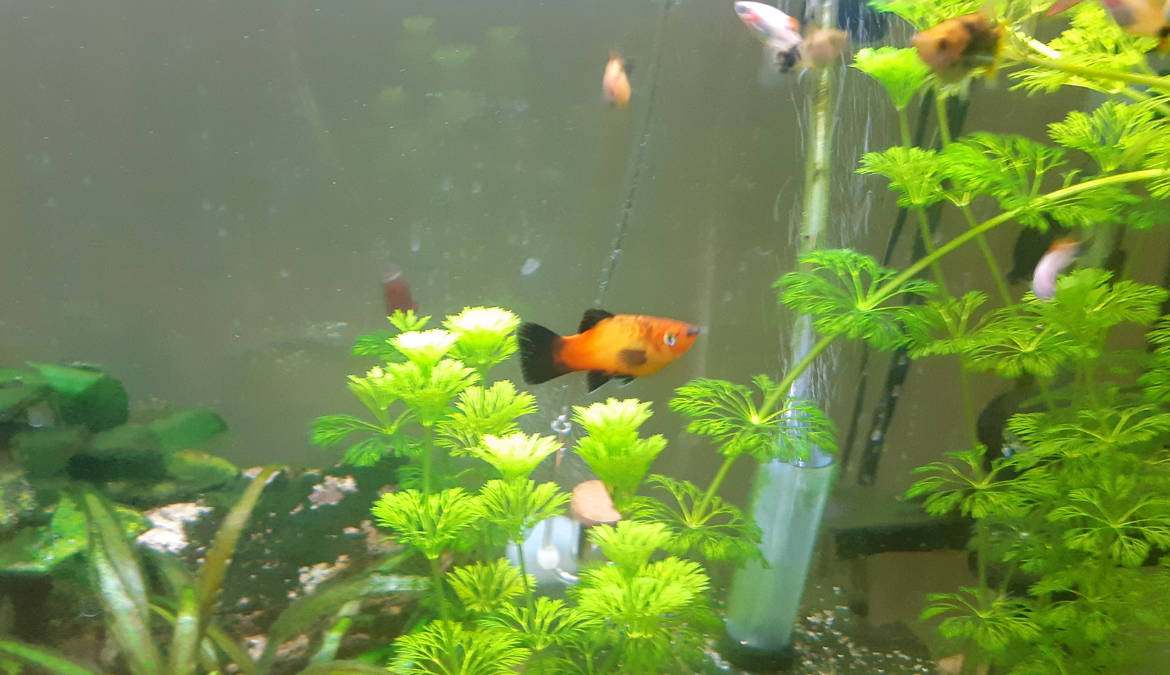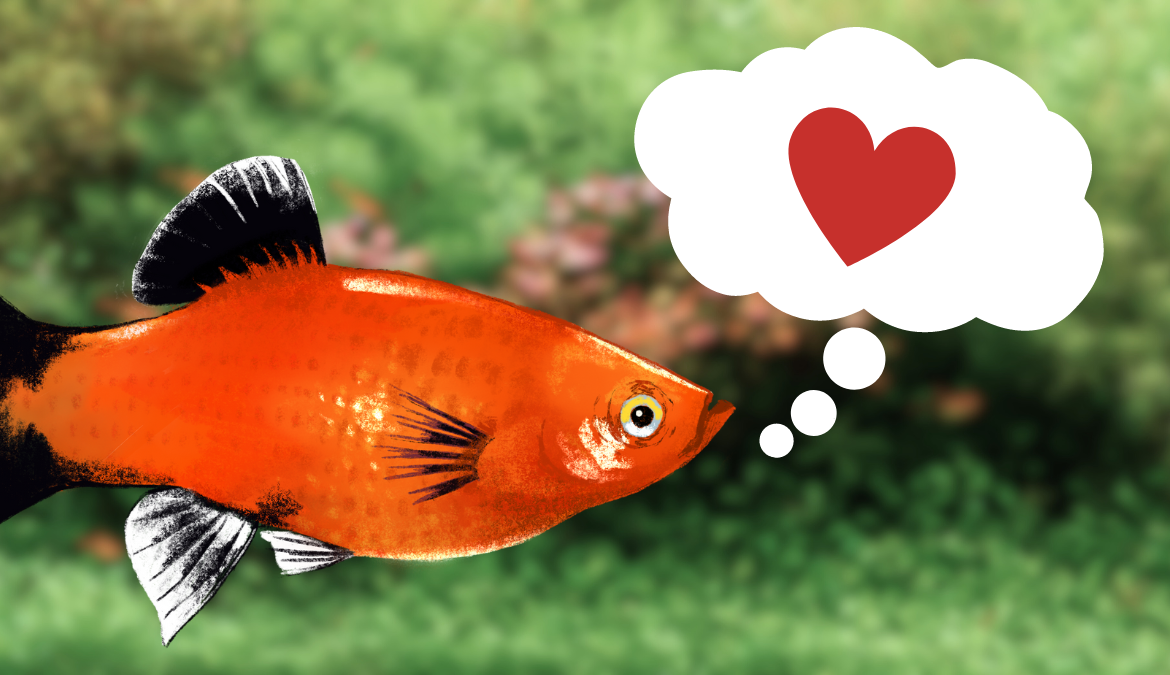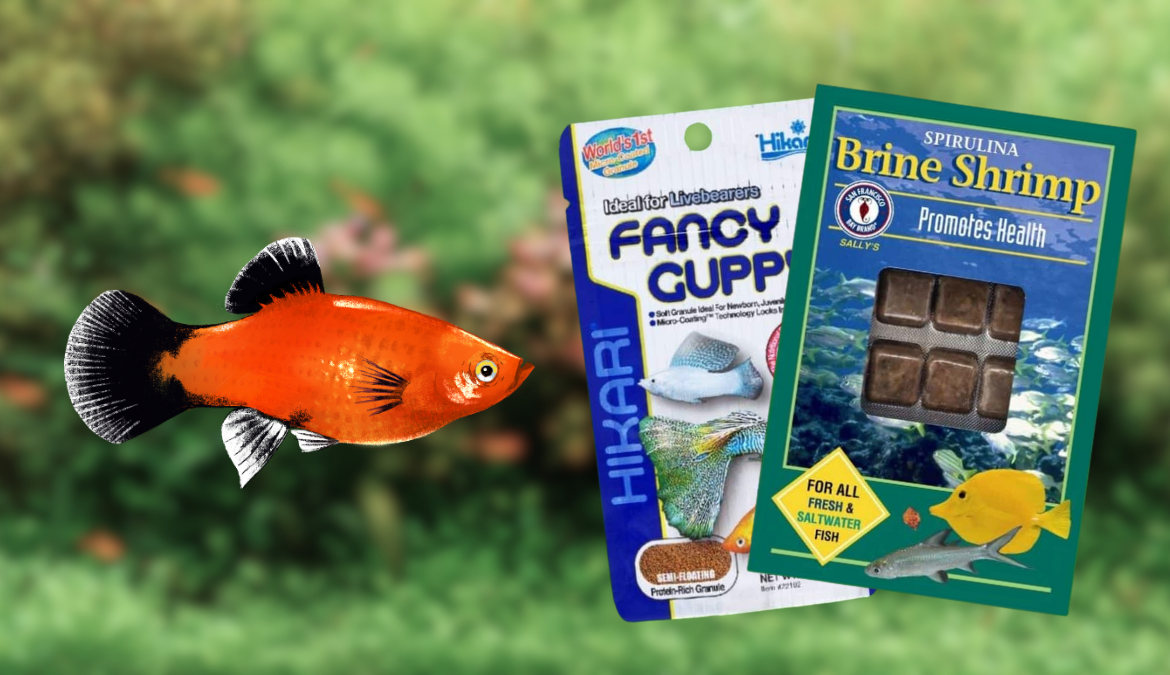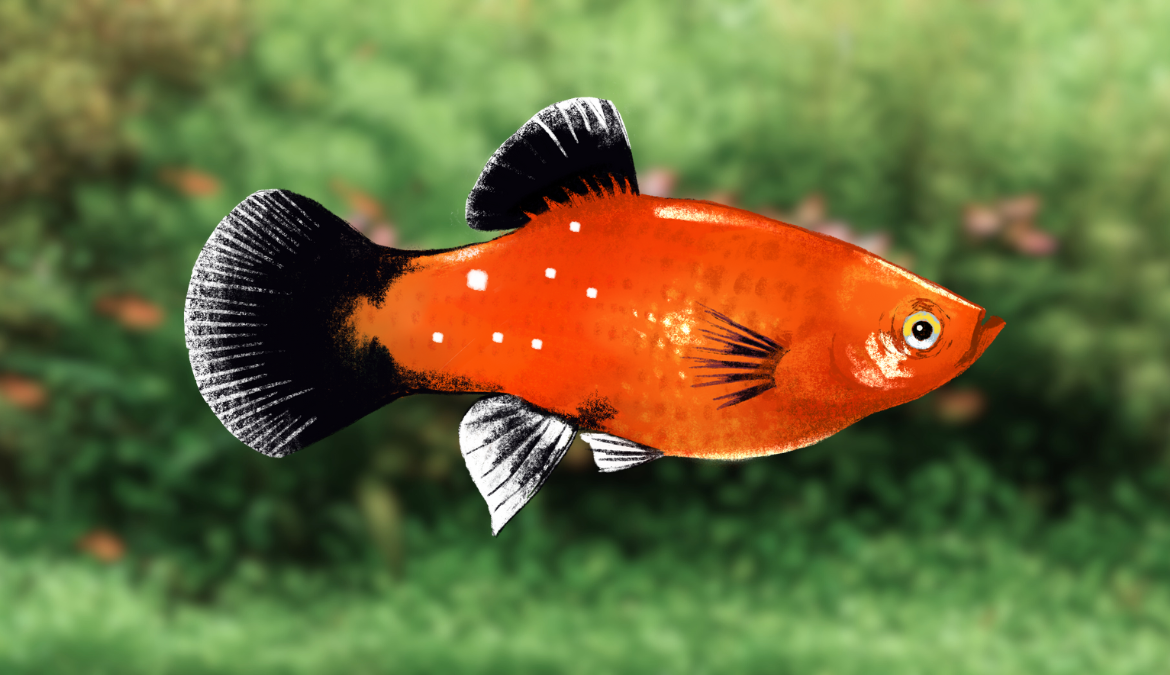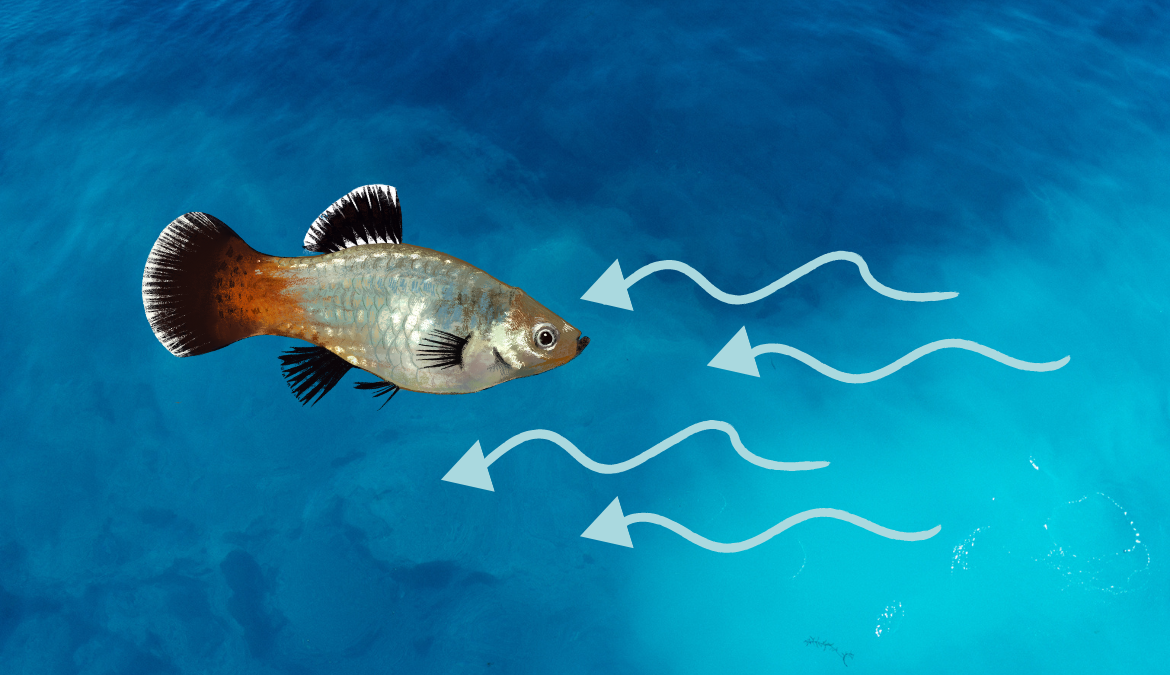Creating the ideal environment for your platy fish goes beyond just choosing the right tank size or maintaining the proper water parameters. Among the key elements that contribute to a thriving, stress-free platy habitat are hiding spots and resting areas, particularly in planted tanks.
Caves, driftwood and plants can be used to create hiding spots for platies, which allows them to hide from aggressive tank mates, spawn comfortably, and minimize stress.
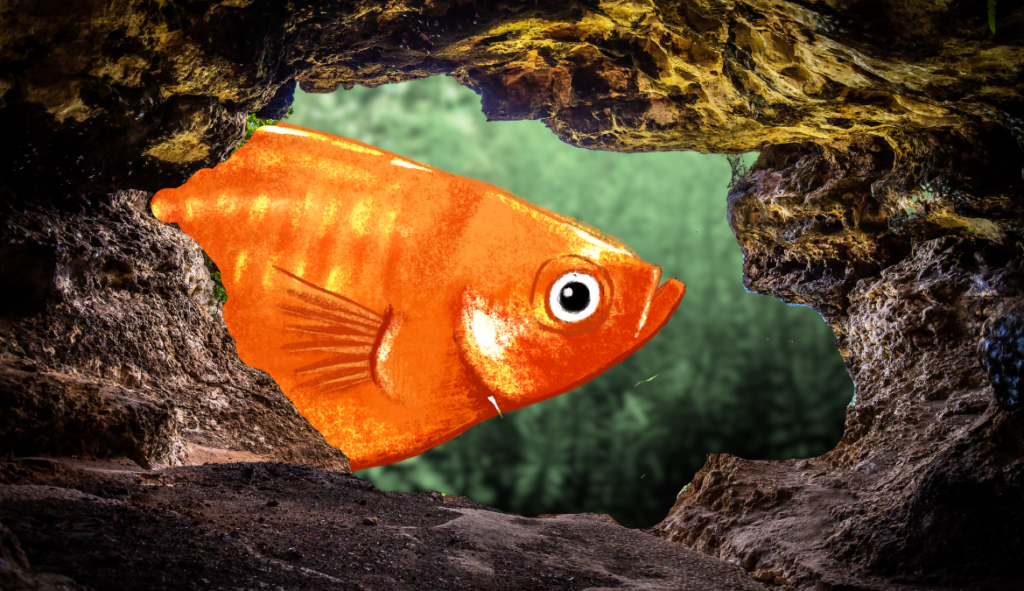
But why are these elements so important? Let’s dive deeper into this topic.
Contents
- 1 Understanding Platy Fish Behavior
- 2 The Role of Hiding Spots in Platy Fish Health and Comfort
- 3 Benefits of Resting Areas in a Platy Fish Tank
- 4 Designing Resting Areas and Hiding Spots
- 5 How Many Hiding Spots and Resting Areas Do You Need?
- 6 Additional Benefits of Hiding Spots and Resting Areas
- 7 Maintaining Hiding Spots and Resting Areas
Understanding Platy Fish Behavior
Native to Central America, platy fish are small, active swimmers often found in densely planted environments. Their natural behavior involves exploring, foraging, and occasionally seeking refuge in plants or near other structures.
Understanding these behaviors is crucial for providing an environment that allows your platy fish to exhibit their natural instincts, contributing to their overall health and happiness.
Platy fish are generally peaceful, but like all fish, they may become stressed due to various factors such as tank mates’ aggression, breeding, or environmental changes.
The importance of minimizing platy stress
Stress has a significant impact on the immune system of platies and all fish, making them more susceptible to diseases. The relationship between stress and disease in fish is multi-faceted:
- Impact on the Immune System: Chronic stress can suppress the immune system’s ability to respond effectively to pathogens. It affects the number and function of immune cells, reducing the fish’s capacity to fight off infections.
- Hormonal Changes: Stress triggers the release of cortisol, a hormone that helps animals, including fish, cope with stressful situations in the short term. However, chronic elevation of cortisol levels can have detrimental effects, including suppressing the immune system.
- Physical Damage: Stressful conditions can cause physical damage to a fish’s skin, scales, or gills, providing entry points for bacteria, parasites, and other pathogens.
- Behavioral Changes: Stress can lead to changes in a fish’s behavior that increase its risk of illness. For instance, stressed fish may eat less, reducing their intake of vital nutrients that support immune function. They may also hide more, which can be a problem if it means they’re spending time in less clean parts of the tank.
Some common causes of stress in aquarium fish include poor water quality, incorrect temperature, improper diet, overcrowding, aggressive tank mates, and constant disturbances from outside the tank.
The Role of Hiding Spots in Platy Fish Health and Comfort
Hiding spots are an essential part of your platy fish’s habitat, serving a significant role in their health and comfort. They provide a safe retreat where your platy can escape perceived threats, reducing their stress levels.
There are a few behavioral reasons fish find comfort in hiding spots:
- Predator avoidance
- Stress reduction
- Territory establishment
- Spawning
This is particularly important in a community tank, where interactions with other species can sometimes be stressful. In fact, even peaceful fish like platies can show occasional aggression, making hiding spots a necessary feature in your tank.
Apart from providing refuge from aggression, hiding spots are also vital during the breeding period. Pregnant platy fish, in particular, benefit from secluded areas where they can give birth in peace. As livebearers, platies can produce several fry at once, and having an area to retreat to can make the process less stressful. Check our guide on pregnant platy care for more information.
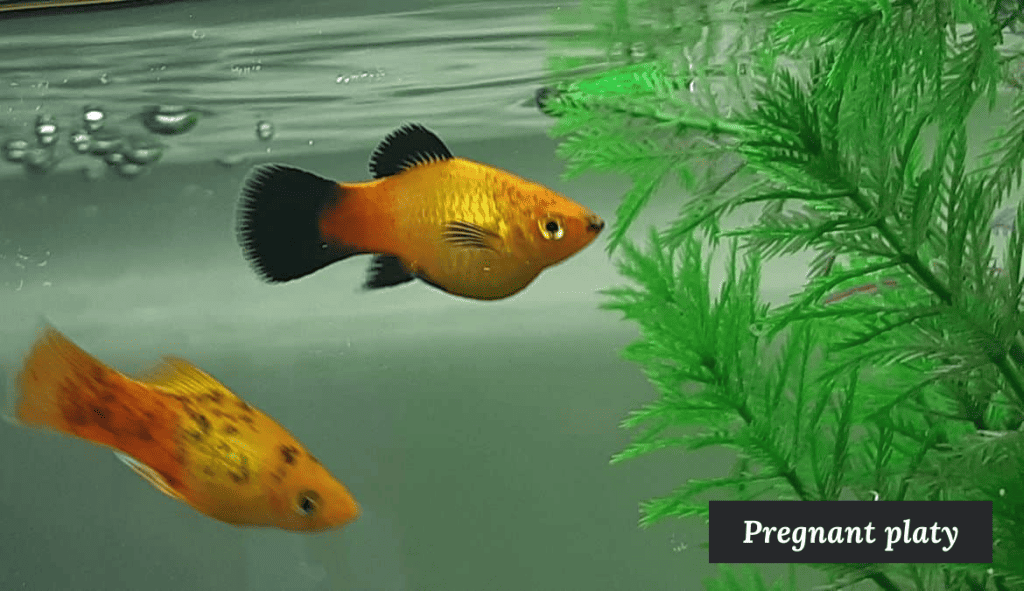
When designing hiding spots, consider using live plants, caves, or driftwood. Not only do these materials create a natural-looking environment, but they also provide additional benefits.
For example, live plants help improve the water quality by absorbing nitrates, while driftwood can serve as a supplemental food source for some species.
Benefits of Resting Areas in a Platy Fish Tank
Resting areas are another important feature to consider when setting up your platy fish tank. Just as hiding spots provide a place for your platies to escape from stress, resting areas offer a spot for them to take a breather and conserve energy. This is especially beneficial in a heavily stocked tank where the constant activity can tire out your platy fish.
Resting spots can be created with a variety of tank decor such as broad-leafed plants, flat rocks, or even specially designed fish hammocks. The goal is to provide a place where your platy fish can rest without sinking to the bottom or floating to the top. This is particularly important during the night when platies, like many fish species, tend to slow down and rest.
Designing Resting Areas and Hiding Spots
The design and location of your hiding spots and resting areas can have a significant impact on their effectiveness. Ideally, these spaces should be easily accessible yet provide enough cover to make your platy fish feel secure.
When designing these areas, it’s essential to take into account the habits and preferences of platy fish, as well as the overall aesthetics of your tank.
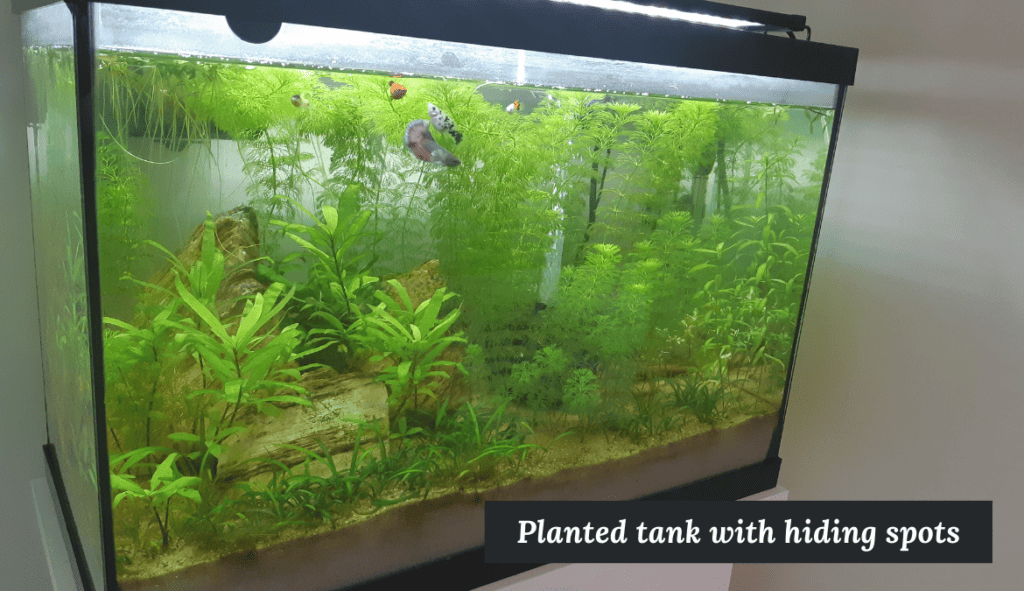
Live plants are an excellent choice for creating both hiding and resting areas. Plants like Java fern, Amazon sword, and Anubias species have broad leaves that can serve as rest spots, while their dense growth provides perfect hiding spots. Similarly, floating plants can provide cover from above, mimicking the shaded environments platies often inhabit in the wild.
Structures such as caves or pieces of driftwood also make good hiding spots. If using these, ensure they have no sharp edges that could injure your fish. In my tank, I simply have a couple big rocks leaning against each other, which provide a dark cave environment for my paties to retreat to.
If you’re interested in a more detailed guide on setting up an ideal tank for platies, refer to our post on how to set up the ideal platy fish tank.
How Many Hiding Spots and Resting Areas Do You Need?
The number of hiding spots and resting areas you should include in your tank depends on several factors, including the size of your tank, the number of platies, and the presence of other species.
As a general rule, aim to have at least one hiding spot that provides complete protection, such as a cave, and enough plants or decor to break the line of sight from one side of the tank to the other.
It’s also important to spread these spots throughout the tank if possible. Having a variety of hiding spots and resting areas in different parts of the tank will give your platy fish the freedom to choose where they feel most comfortable, further reducing their stress levels.
Additional Benefits of Hiding Spots and Resting Areas
While hiding spots and resting areas primarily serve to reduce stress in platy fish, they offer several other benefits that contribute to the overall health and well-being of your fish.
For one, these areas can contribute to a sense of territory, reducing aggression among tank mates. This is particularly useful if you’ve noticed signs of aggression.
Additionally, hiding spots and resting areas can enhance the aesthetics of your aquarium. Live plants, driftwood, and other tank decor not only provide functional benefits for your platy fish but also create a visually appealing aquatic landscape. With careful design and selection of decor, you can create a tank that is both healthy for your platy fish and pleasing to the eye.
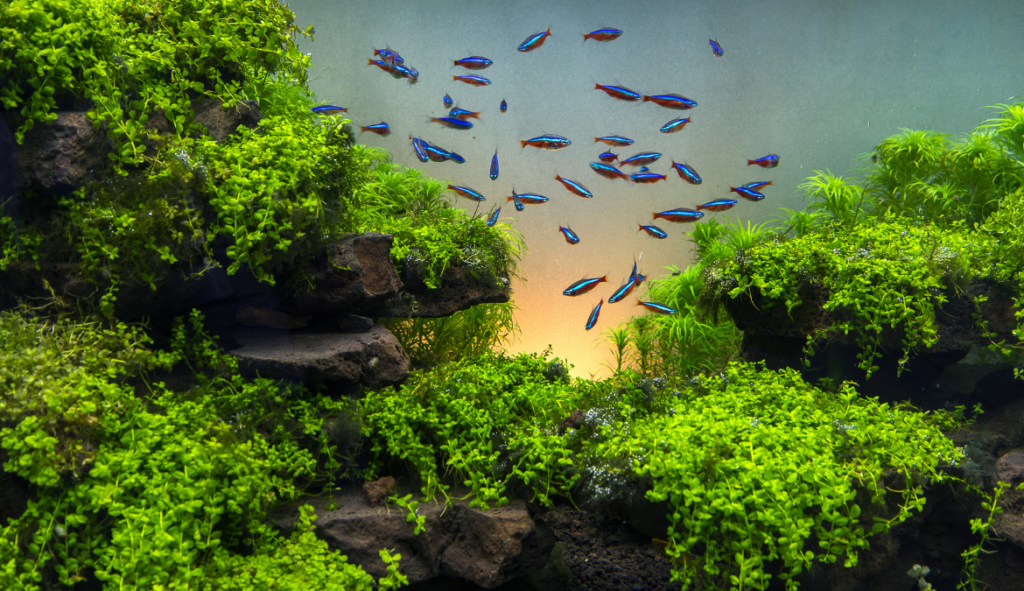
Maintaining Hiding Spots and Resting Areas
Maintenance of hiding spots and resting areas is just as important as their initial setup. Regular cleaning is necessary to prevent the buildup of algae and bacteria, which can negatively impact water quality and, subsequently, the health of your platy fish.
When cleaning, remove any decor that is safe to move and gently scrub away algae with a soft brush. For live plants, trim away any dead or dying leaves to maintain the plant’s health and prevent decay in the tank.


